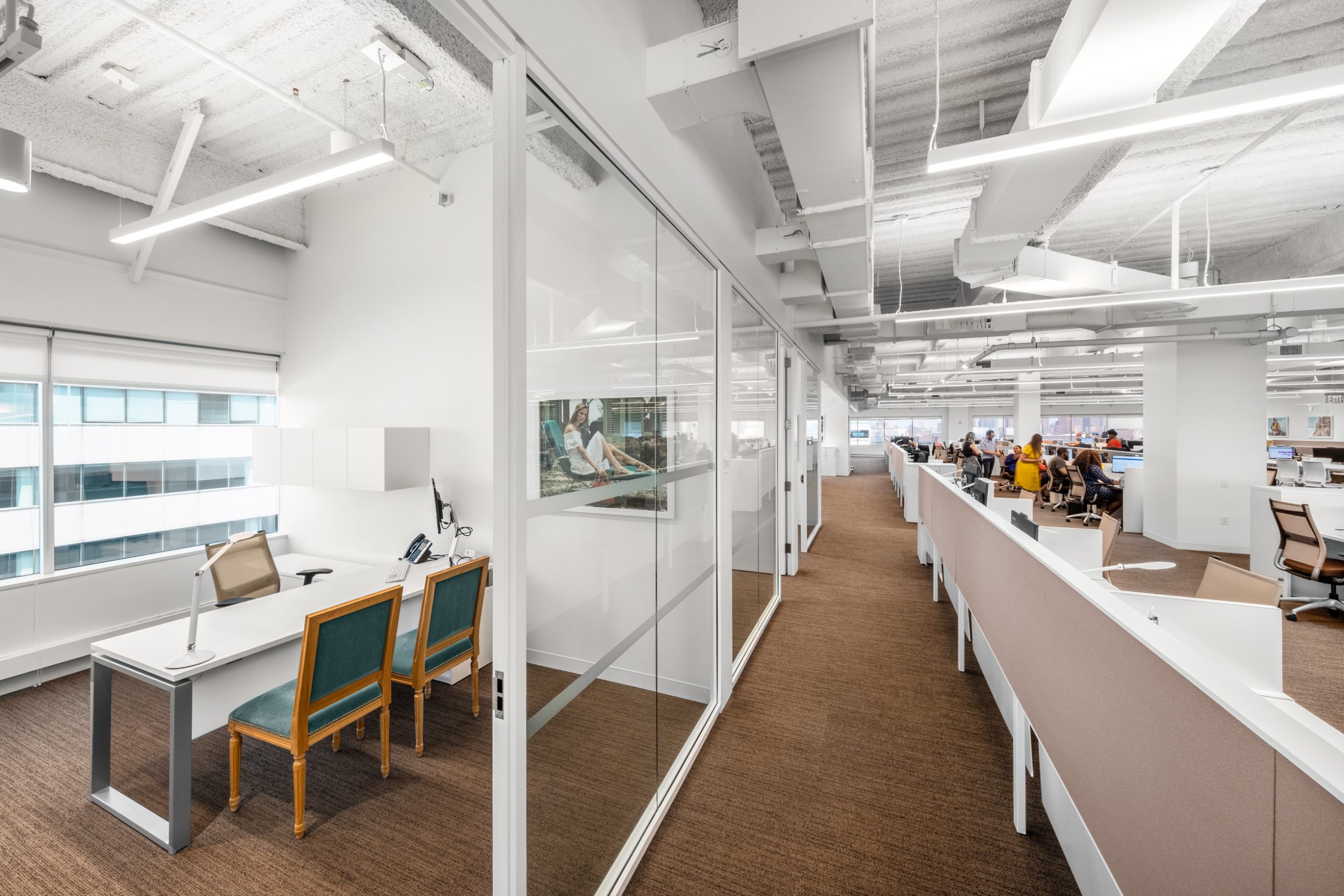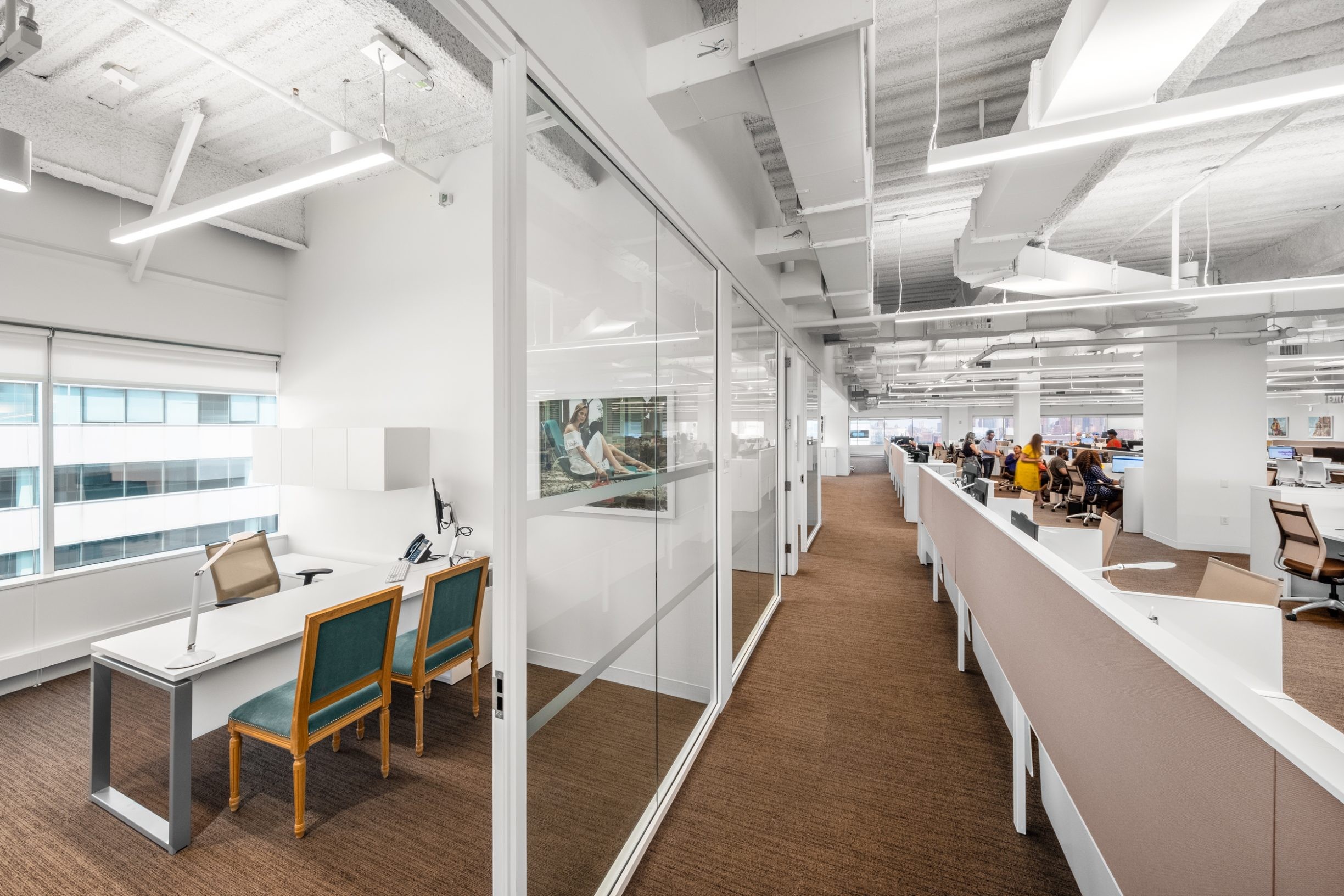Hybrid Offices Are Quiet. Here’s How to Adjust.
By Kirsten Nelson


As I crank up my noise-canceling headphones to the highest level of sonic buffer, without cueing up any music, just basking in that sweet algorithmic silence, I have to laugh. I am working alone at home. And yet, I need this sweet, sweet calibration of emptiness in order to focus.
At least that’s the case on some days. Some other days, though, I need to mix it up, add some social interaction to the background. Just the prospect of other people’s conversations, combined with the light social pressure of witnesses to my working endeavors, really helps to increase my attention span.
Every day, workers with desk-centric or office-bound jobs engage in a similar dance between absolute silence and just a little bit of distraction. It’s the eternal paradox of noise versus isolation. It’s always existed, but we’re definitely paying a lot more attention to it now.
If you ever think your workplace is too loud, just imagine the not-too-distant past, when offices were giant, open-plan rooms full of typewriters and analog phones, decorated with tile floors and metal furniture. And in order to cope with all that cacophony, people could smoke cigarettes at their desks. Crazy, right? (Don’t get me started on vaping.)
I’ll spare you any further summary on the evolution of the office. We all know how it has swung from open-plan to cubicle life and back again. Instead, let’s look at isolation and noise. There can definitely be too much of both, but also, they’re prized commodities. And that’s true in a lifestyle sense and also in terms of the still-too-often-overlooked science of acoustics.
Yes, seriously, even with all the widespread understanding of “noise cancellation,” acoustics is still a wild mystery beyond comprehension. Everyone thinks the office is too loud, too distracting, but few realize that it’s not the people who are the problem, it’s the materials, architecture, and so many additional acoustical factors surrounding them.
When I talk to who we might somewhat condescendingly call “laypeople,” particularly those who work at big tech companies with unlimited snacks, or managers of fashionable co-working spaces and such, they have no idea why everyone feels the need to wear headphones in utterly silent rooms full of stylish hard surfaces and reflections. It’s quiet, but every crunch of a kettle chip, every shift in a creaky chair or tap on a keyboard is amplified to an unbearable degree. And don’t even think about talking. It’s like your conversation is happening over a PA system (laypeople, that’s a “public address system” or a “Tannoy” in the U.K., or any kind of huge loudspeaker rig that might be used at a concert or sporting event).
Our offices look more beautiful than ever, but lots of people in them are hunching their shoulders in acoustic agony. Thus, working from home, even with all its attendant chaos, starts to feel pretty good by comparison. (Plus, yes, we all love being able to do errands during the workday.)
So, now that we’ve got this “return to office” situation continuing to drive lots of small-talk, it might be time to look once again at calibrating the perfect blend of noise vs. isolation.
Because, in fact, that blend has shifted in this new hybrid workplace scenario. With so many people working remotely (a trend that began before the pandemic, creating a “hot-desking” scenario to erupt in many workplaces, eliminating even further the cozy personal touches that soften our surroundings, thus making the hollow echo-chamber effect even more reverberant), the balance has shifted too much in favor of problematic noise. Not enough people, not enough background conversations to create a natural sonic buffer, means the good noise is outweighed by bad noise. (Again, in the interest of time, I’ll skip any exploration of the distinction between “noise” and “sound.”)
It’s Too Quiet
To learn more about what modifications might help make the office more welcoming on an auditory level, I talked with esteemed acoustician and talented designer of many a workplace and performing arts venue Matt Mahon, Co-Founder and Principal of LSTN.
Our conversation begins with “wellness in the workplace,” and how a renewed focus on making people feel better while at the office is placing new emphasis on human factors in design. Along with that trend comes greater awareness of a multitude of working and social styles. Now when we consider where and how we work, we are talking more about accessibility, neurodiversity, personality traits like introversion and extroversion, and so many other contributing factors that determine needs.
In addition to the many ways people respond to distractions, there’s evidence that high-noise environments increase blood pressure, so physical health is at play here too.
So how do we begin to accommodate on a broad scale for the vast number of highly individual factors that influence our experience of noise?
Well, we get back to the fundamentals. Looking at the open-plan offices so common to workplaces today, we know a few things to be true. They actually work best from an acoustic perspective when there are more people in them.
Using a nice round number as an example, Mahon explained, “A healthy open office has a hundred people in it, 90 of whom are contributing to a babble of sound that you can’t localize.” The problem begins with the other 10 people, the ones closest to your desk. You’re more likely to lock into the sounds of what they’re doing, not only because of proximity, but because socially you probably know them the best.
This becomes even more of an issue in today’s hybrid office scenarios. There will be a lot more talking happening at desks as more people participate in video chats throughout the day. And designing an acoustic atmosphere where these conversations can happen will be essential to creating an egalitarian experience for remote people and in-office people, Mahon said. “If the design or use of an open office environment can’t support that use case, it will remain difficult to coax people into the office – at least until major upgrades are made to meeting room AV systems.”
In order to blur those conversations closest to you, the addition of some electronic babble might help. That’s where noise masking systems come in handy. “Noise masking can be useful in an office environment to increase the background noise levels, thus masking other sources of noise,” Mahon said. “Non-steady-state sources of distraction, i.e., your neighbor clicking on their keyboard or talking, can be really distracting, and noise masking systems can limit that distraction.”
Now, let’s think about much emptier offices, which are more of a reality today as people continue to work remotely several days of the week. “So now you go into this hypothetical 100-person space and there’s 12 people, and three of them are seated relatively close to you. And there’s no healthy babble. There’s no continuous noise to mask the three people closest to you. And so instead of feeling good about being back in your office, you’re annoyed by what’s happening near you.”
So what can be done? That’s where the sound masking comes in. “I do think sound masking in the post-pandemic era is useful for replacing the healthy babble that might have existed before in a big office,” Mahon noted. “It may not be quite as authentically derived, but psychoacoustically it plays the same role.”
So where does that fit into the Dante world? “Sound masking benefits from de-correlated sound. And so the greater the number of unique channels of de-correlated pink noise that you can create, the better your sound masking system is,” Mahon said. So, given Dante’s ability to send unique channels to individual loudspeakers, one could see the benefits of using an IP distribution for the signal.
“And that also has the potential of allowing you to do background music at the same time you’re doing sound masking,” Mahon added, “which isn’t always super easy to do with other other technologies.”
It’s Too Loud
Beware of the opposite end of the solution spectrum. Sometimes when office managers or HR people or any leadership types hear complaints of a space being “too loud,” they try to deaden the sound and make the whole open-office area more quiet. Not good.
“They put too much sound absorbing material throughout the offices, and that does a really good job of reducing sound from very far away, but it doesn’t do a very good job of reducing sound from very close to you,” Mahon explained. “And so it unnecessarily reduces the kind of cacophonous babble that actually plays a healthy role in the office.”
That’s where we get back to headphones. When the noise versus isolation equation is out of balance, people tend to compensate for too much noise with their own local form of isolation — putting on headphones and cranking up noise cancellation. But if they’re going to do that, they might as well stay at home.
“Headphones aren’t a very good solution, because then you don’t get any of the benefits of the open office plan if people retreat into an isolated mode where you don’t have this serendipitous discovery of information amongst colleagues,” Mahon said.
Those random moments of connection are why we go to the office. But the fact that so many people who could return to the workplace are staying remote reveals that a lot of them really never liked the office in the first place.
WIth “distraction” being one of the key things people talk about when they talk about offices, maybe we need to contemplate the acoustic implications in this situation. Why were people unhappy in these spaces? Can we make them more comfortable?
“The first and core reason an office should exist is because employees need to be supported, and it should support them with the space and the technology they need,” Mahon said. “I think acoustics play a role in that. And sound masking also plays a role in that. I think we have a unique moment in time right now. How can we continue to improve office environments, not just to lure people back, but actually making it better than the alternative places for people to work?”
Stay up to date with the Dante Journal
* indicates required fields




